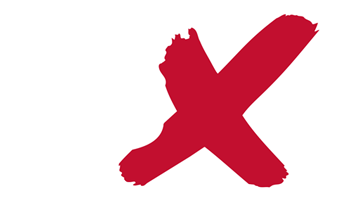Written By Arif Hasan (ColdOmaha.com)
Photo Credit: Kyle Hansen
The Minnesota Vikings have collapsed, and there’s not much ambiguity about that. It’s tempting—and perhaps correct—to argue that the most recent loss against the Indianapolis Colts was because of a lack of effort and focus.
But Matthew Coller at 1500ESPN has a different idea (or at least another, additional explanation): teams are flashing personnel sets to keep the Vikings base defense off the field; effectively benching Captain Munnerlyn and playing Chad Greenway.
Greenway has played 39.5 percent of the Vikings’ snaps this year while Munnerlyn has played 59.8 percent of their snaps—essentially a 40/60 split. That’s become somewhat normal in the new NFL, but it hides an essential fact: Greenway has played more and Munnerlyn has played less in games where the Vikings did poorly.
I quickly checked snap counts for Greenway’s games to see if there has been an impact in games. In games where he’s played fewer than 40 percent of snaps the Vikings have a 6-0 record. In the other games, they have a 1-7 record.
That’s something, but it’s not close to explanatory. I checked overall points allowed next. In games with fewer than 40 percent of snaps played for the veteran linebacker, the Vikings have allowed 14.5 points per game, while they otherwise allowed 21.5.
But there might be an opponent adjustment problem; if teams with better offenses just happened to be in heavy personnel sets more often, it would complicate the analysis. So I decided to check the difference between an opponent’s average score in non-Vikings games against the score they put up when playing Minnesota.
In games where Greenway played fewer than 40 percent of their snaps, opponents underperformed by 7.75 points. In games where he played more than that, opponents underperformed by 1.68 points.
Then I looked at Football Outsiders’ DVOA, which is the most granular and opponent-adjusted measure I have on hand. It looks at play-by-play data and rewards both success rate and explosive plays. Positive scores are good for the offense and negative scores are good for the defense.
The matchups that involved lower Greenway exposure had a DVOA of -15.0 percent and the other ones were -5.0 percent. For context, -15.0 percent would rank third among all defenses and -5.0 percent ranks ninth.
That’s a crude analysis but it matches up when you look at a 50 percent or correlation (also relatively simple, but a little more explanatory):
| Chad Greenway Playing Time | |||||
| Statistic | <40% | <50% | >40% | >50% | Correlation |
| Win Percent | 100% | 70% | 12.5% | 0.0% | -0.765 |
| Points Allowed | 14.50 | 15.70 | 21.5 | 25.5 | 0.597 |
| Opponent Adjusted Points | -7.75 | -7.28 | -1.675 | 3.225 | 0.501 |
| DVOA | -15% | -17% | -4.0% | 12.5% | 0.368 |
| Games | 6 | 10 | 8 | 4 | N/A |
Correlations run between -1 and 1, with zero meaning there’s no relationship while numbers further away from zero indicate a stronger relationship.
As snaps go up, wins go down, points allowed go up. DVOA provides the weakest relationship but is still somewhat strong as far as football numbers go (and also is more impacted by one game—week four against the Giants, where he only played 3 percent of snaps—than any other of the statistics).
This by itself isn’t anything resembling a nail in the coffin for the theory. Teams that are winning and scoring more points will run more often late in the game, and put in personnel sets to enable running the ball. But Greenway hasn’t been playing well, while Captain Munnerlyn has been playing at a high level.
Pro Football Focus logs him as having seven missed tackles this year—more missed tackles than he had last year, despite playing 300 fewer snaps this year.
He ranks 78th among 91 off-ball linebackers in run stop rate (percentage of running snaps where he logs a tackle-for-loss or tackle close to the line of scrimmage) and his ratio of missed tackles to made tackles ranks 25th among 34 outside off-ball linebackers.
We’ve seen him make significant mistakes in coverage, too, allowing two touchdowns to the one interception he grabbed and generally allowing a 97.7 quarterback rating when thrown to.
Those all combine to produce PFF’s 64th-ranked linebacker of 91.
To be clear, this isn’t all Greenway’s fault—Anthony Barr has been worse in all or nearly all of these metrics (though has missed fewer tackles per made tackle), and if he had been playing better this year, the overall impact Greenway would have had would be minimal.
But it’s worth noting that Munnerlyn (37th of 120 in PFF’s grades) has had more games at a higher level of play and that opponents have tried to eliminate his presence from games. Before Week 8, he was on the field for 76 percent of snaps. After Week 8, only 48 percent of snaps.
In Weeks 10 and 11 specifically, Munnerlyn only saw the field for 16 percent of snaps, where the Vikings defense allowed 1.6 points more than their opponents typically scored (the Lions and the Redskins) and in the three worst games of the year form that perspective (Colts, Redskins and Bears—where they gave up 8.8, 2.5 and 1.5 points respectively), he saw the field on fewer than a third of snaps.
It’s happening more often as the season winds down and points to a real problem in the Vikings defensive setup.








